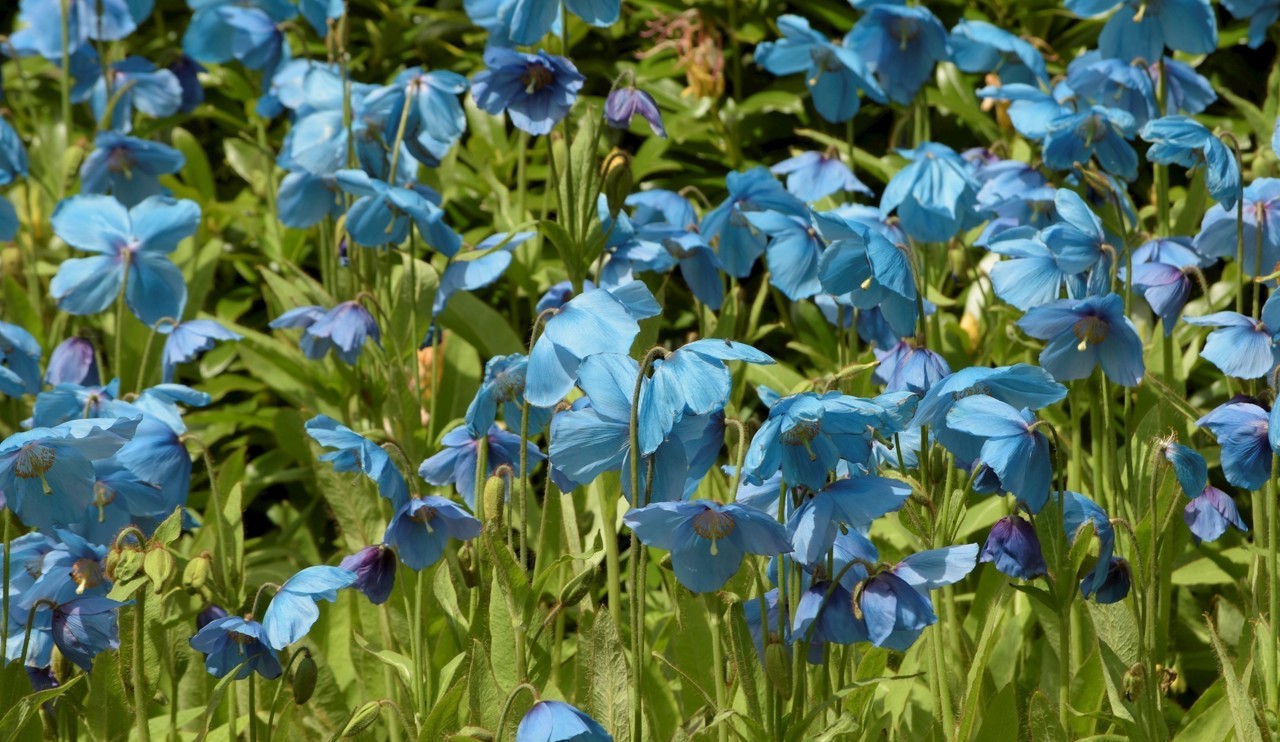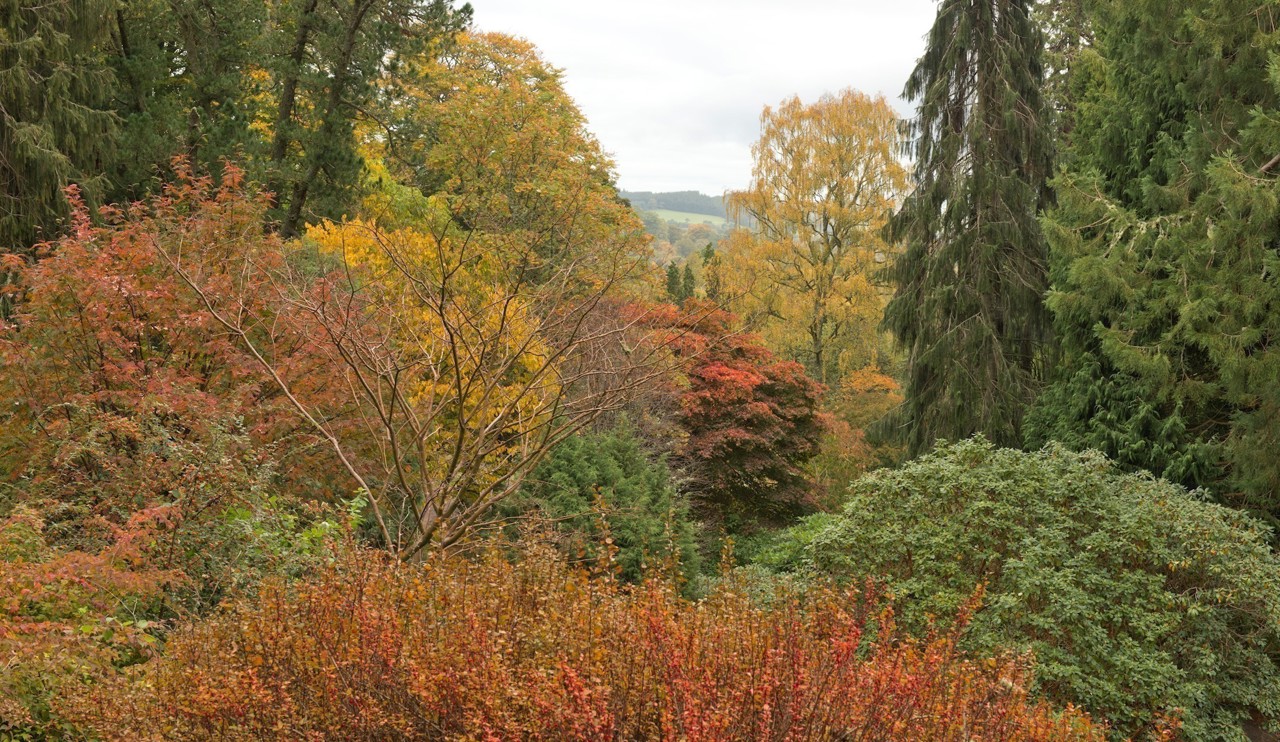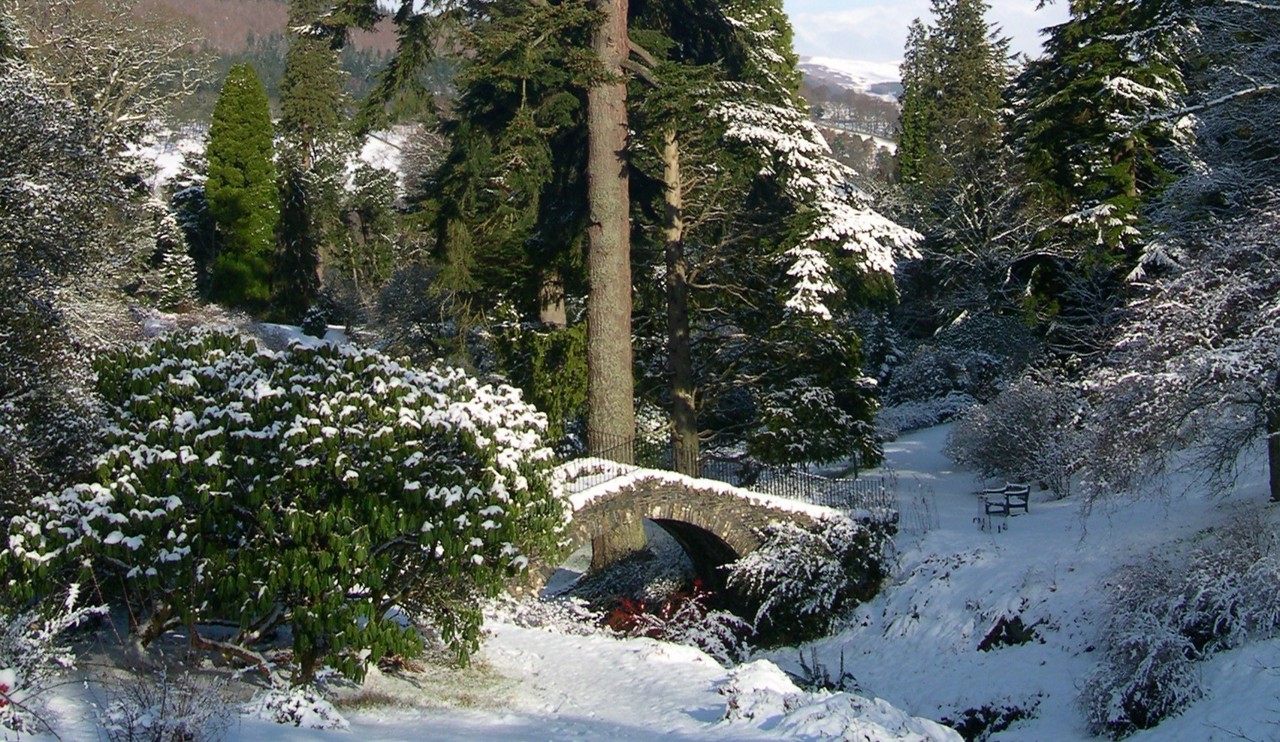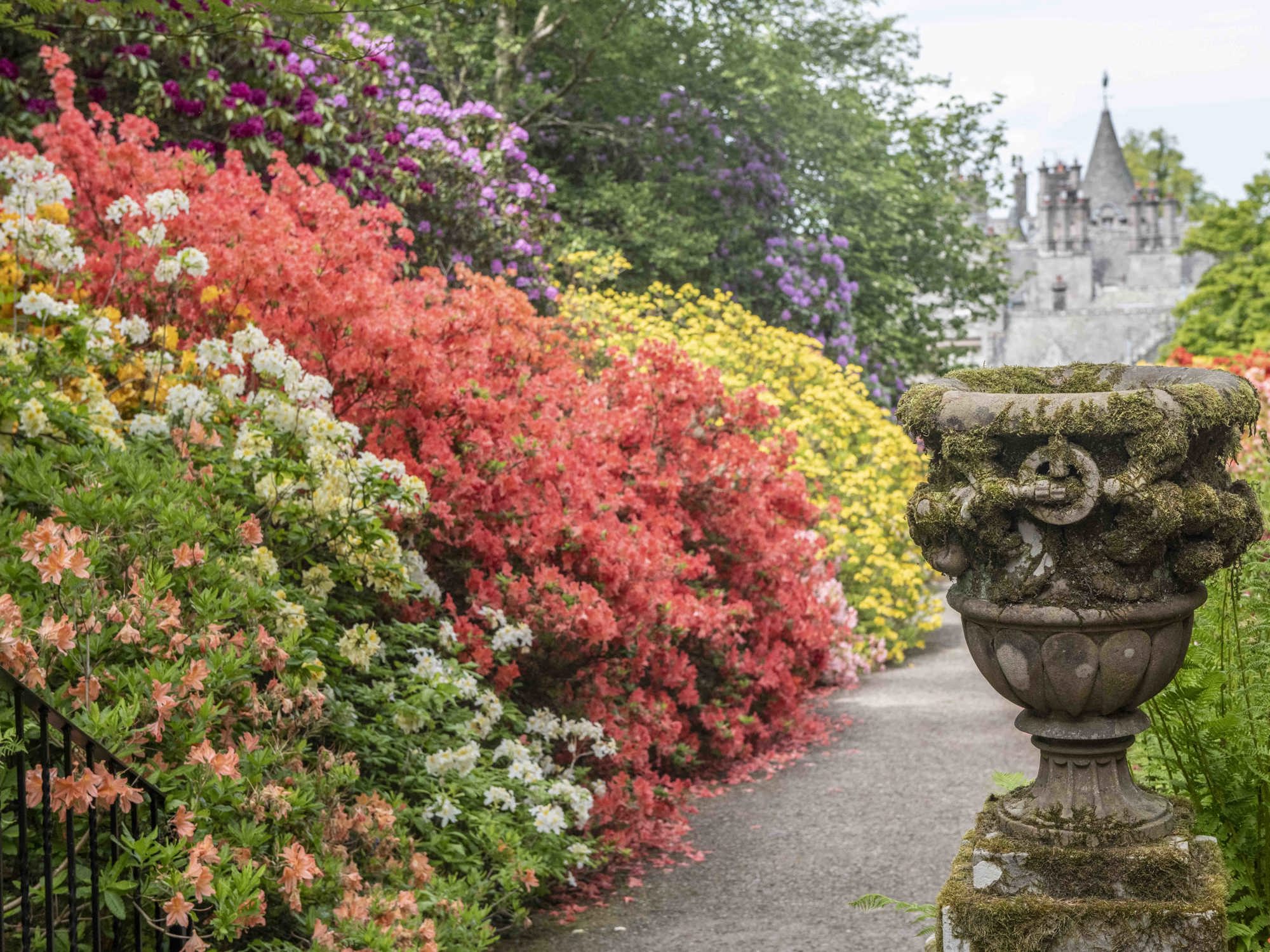Spring
In early spring Dawyck's magnificent collection of snowdrops are the first flowers to make an appearance. The delicate white flowers carpet the banks of Scrape Burn and drift up the hillside behind. The butter-yellow flowers of winter aconites (Eranthis hyemalis) are a welcome sight through the gloom of winter, while a woodland walk is rewarded by the sight of fresh green beech leaves and the magnificence of the earliest flowering rhododendrons including Rhododendron strigillosum and Rhododendron oreodoxa.

Summer
Summers at Dawyck tend to be warmer and drier than the rest of Scotland. May and June are the best months to see the Azalea Terrace bathed in vivid coloured blooms. Late-flowering Rhododendron maximum and the azalea Rhododendron occidentale are often putting on a show into July. The cotoneasters are sprinkled liberally with their miniature flowers through June, while the meconopsis, one of the Himalayan natives that thrive in Dawyck's conditions, are best seen earlier in the season. Late summer is a good time to look beside Scrape Burn for astilbes in the moist soil and shadier spots beside lush hostas and ferns.

Autumn
Autumn is a glorious season at Dawyck. The Garden is bathed in a rich tapestry of reds, golds and rich browns from the maples, rowans, beech spindle trees, the stunning Japanese katsura, or candyfloss tree (Cercidiphyllum japonicum) and North American golden birch (Betula alleghaniensis). The ground is bedecked with autumn crocuses, spectacular fungi and fruits galore; prickly beech nut husks, fir cones, maple keys and shiny conkers.

Winter
White winter frosts and crisp white snow show off the striking colours of the bark and evergreen trees. The Garden drifts into dormancy, and with the leaves off the trees it is an amazing time to marvel at their architecture, with the shapes and forms of the conifers and broadleaves more obvious without the main canopy.


